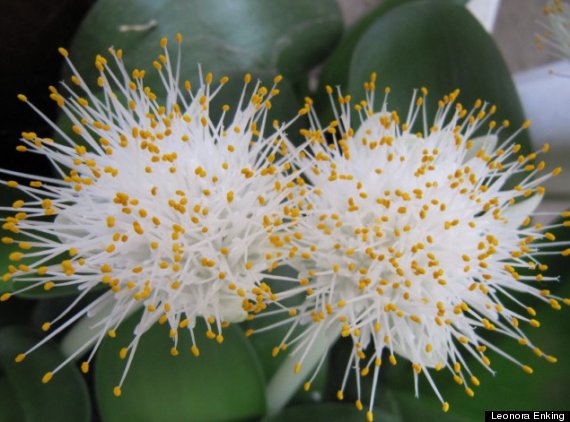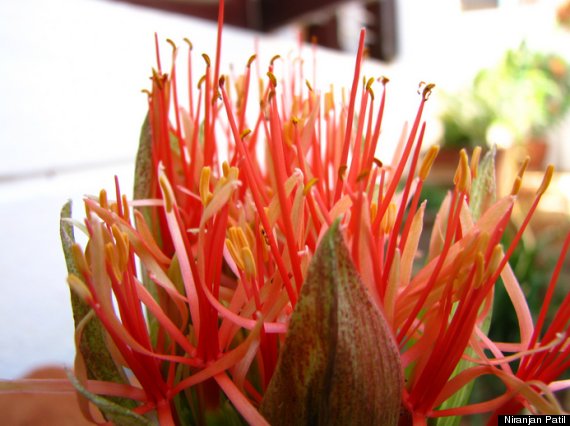The blood lily, or Haemanthus, is a flowering plant in the family Amaryllidaceae naturally found mostly in regions of southern Africa receiving winter rainfall. Three of the genus' species, albiflos, deformis and pauculifolius, are evergreen and normally found in summer rainfall regions with their bulbs planted partially buried so that the nubs poke up above the soil, whereas the winter rainfall region has more arid blood lilies in which bulbs are found well below the soil line, often pushing their flowers out before the leaves make an appearance. Haemanthus albiflos is the only species to span both rainfall regions.
Even though there is a broad range of species in this family in regards to looks and care the flower of this genus has a textural commonality that is hard to miss. Flower color can range from red to white and resembles some aspect of a bottle brushes poking up above the soil. The genus' common name of blood lily was given to it because of the coccineus and sanguineus species whose flower color is blood red. While one of my favorite species as an indoor houseplant, the H. albiflos, flowers white. The leaves can also greatly vary from species to species from number to shape and form. Another reason why the Haemanthus albiflos is preferred as a houseplant by many is because its leaves are as interesting as its bloom, boasting thick, ovate, rubbery leaves that explode from the base. Leaves are soft and matte on one side while the other side is slightly furry and soft. The blood lily will also fruit after flowering from shades of red to white. These fruits can be utilized for propagation besides using offsets or leaf cuttings. Keep in mind their seeds are not like conventional dried seeds and need to be propagated immediately if selecting that method.
Blood lilies have a wide variety of light requirements depending on the species. Full sun blood lilies are normally experience winter rainfall, and are deciduous species while ones that crave partial shade are generally expect summer rainfall and are evergreen species. Blood lilies need well drained soil and can be tolerant of poor soil. Do not try to repot or disturb them when they are in the middle of a bloom cycle. The Haemanthus albiflos is one of the most widely cultivated blood lilies and the one that I recommend trying as a houseplant if you want to add this genus to your plant repertoire. It is evergreen -- keeping its thick leaves all year round, blooms regularly November through January, only needs partial shade versus full sun and will bloom in its third or fourth year where some species can take over a decade. Don't let the namesake drain you...

